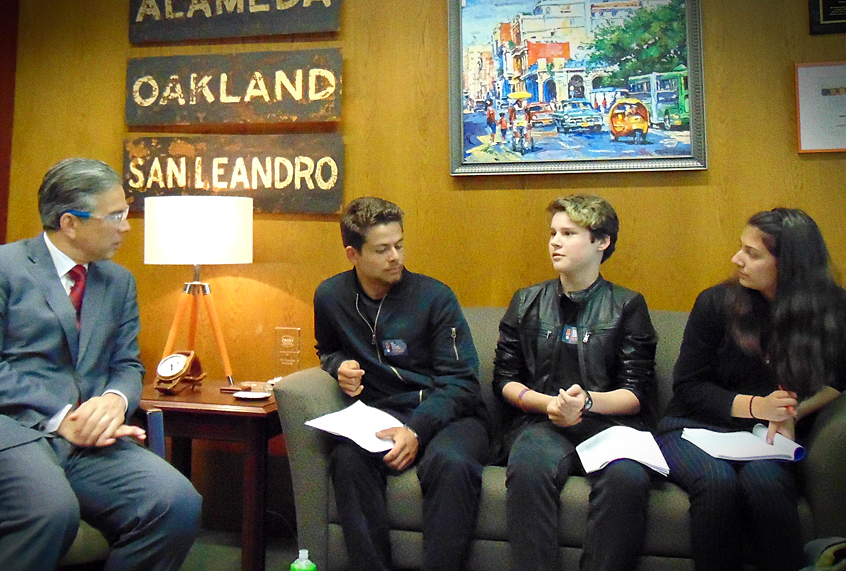A little over 10 years ago, when I was a teenager in the Midwest, I thought being rebellious meant smugly smoking cigarettes before cheerleading practice. It never occurred to me that teenage defiance could be part of something bigger, like skipping class to persuade state legislators to support common-sense gun laws.
Yet Generation Z has grown into this uprising of their own, the fight for stricter gun control laws — a movement induced by this year’s Valentine’s Day massacre at Marjory Stoneman Douglas High School in Parkland, Florida — is also this cohort’s way of defying teenage stereotypes. In the fight to save lives from gun violence, they’re also rewriting what it means for teenagers to revolt.
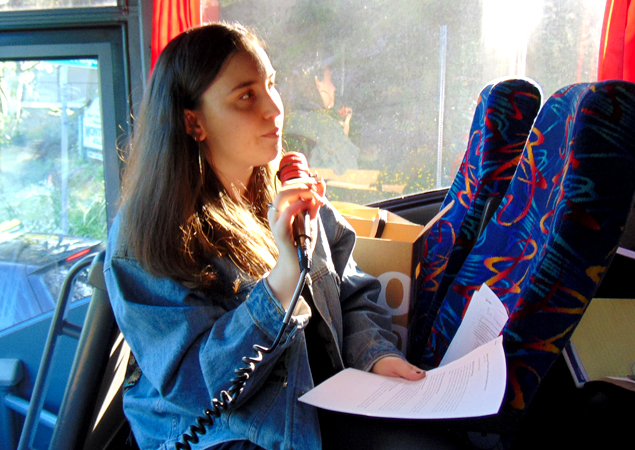
In April, a press release floated into my inbox with the subject line “Bay Area Student Activists Press Event.” “Around 350 students from all over the bay area will travel to the state capital on April 19th to meet with state legislators and push for action on gun control,” it read. The odd formatting hinted that it may have been written by a teen. It was; I replied and asked if I could tag along. One of the organizers, Ruby Baden-Lasar, of the student-run group BASTA (short for Bay Area Student Activists) responded, “we’d LOVE for you to join us!”
I met Baden-Lasar, a junior at Head-Royce School in Oakland, on a brisk morning at one of the several bus stops where students from across the Bay Area were meeting. One by one the students, dressed in all black, trickled in, loading megaphones, signs and orange visibility vests into the underneath storage compartment.
“Do you have a permission slip?” Baden-Lasar asked each student before they boarded.
Permission slips didn’t signify this rally was a school function, although a few teachers and parents attended; rather, they were mandatory because almost everyone was under the the age of 18, and the bus company wanted to limit liability.
The bus ride from Oakland to Sacramento functioned as its own mobile war-room meeting. Baden-Lasar passed out a double-sided, two-page agenda to review. California’s golden hills flashed past in the background as the 17-year-old spoke about the four bills they’d be discussing with legislators, how to respond to predictable refutations, and general diplomatic advice — like “be appreciative.”
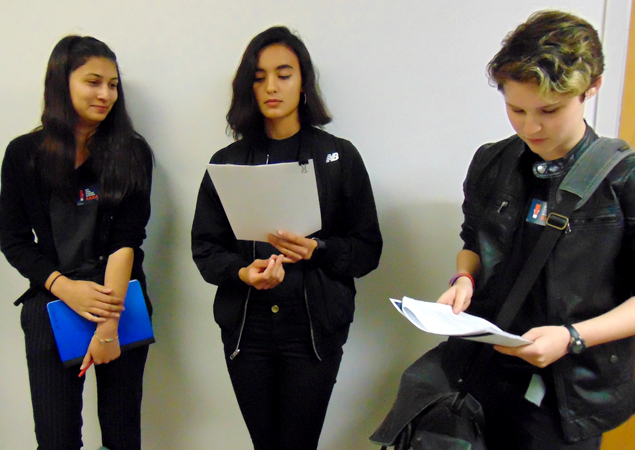
In total there were 32 student subgroups who had meetings planned with 38 policymakers. Students collectively came from 30 schools across Northern California; a few even traveled from Southern California, missing school for the rally. When I asked Baden-Lasar if she had any previous experience in organizing, or in pulling off such a massive event, she said no. The rally was inspired by another group of students in Ohio — called Lobbying for a Safer Tomorrow — who took the #NeverAgain movement and turned it into their own affair.
“After the March 14th walkout, around 250 students from all over Ohio headed to their state capitol to lobby,” Baden-Lasar said. “We were all inspired to do more after the walkouts and this seemed like this best way to have our voices heard.”
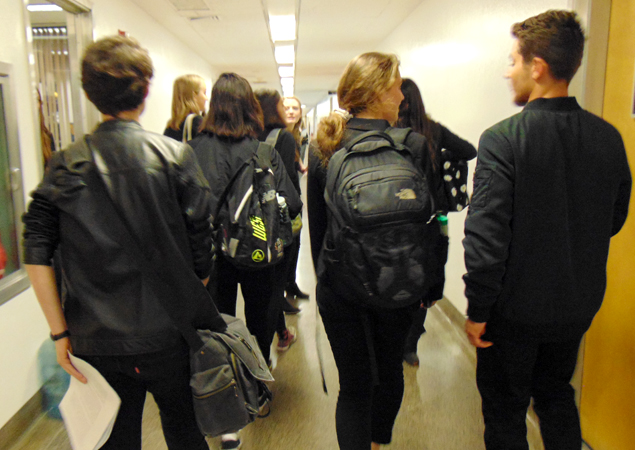
The February school shooting in Parkland sent fissures through the American gun violence conversation. It was the 18th school shooting of 2018, and the 290th shooting since 2013, according to Every Town Research. It’s arguable that the attention it received was long overdue; on an average day, nearly 96 Americans are killed by guns, after all.
These teenagers aren’t the first ones to advocate for common-sense guns laws. Yet there was something about the way the Parkland shooting survivors subverted the news cycle, and provided real-time updates to chronicle the terror they felt when the shooter opened fire. Videos filmed from shaky hands, some from under barricaded desks, were posted to social media as the tragic mass murder unfolded, humanizing their experience.
Then there’s the race component, which has come to light since the shooting. As Michael McBride, director of the advocacy campaign Live Free, explained in an op-ed in the Washington Post, the Parkland students were “part of a broader choir of youths.” That choir includes other teen activist movements like Florida’s Dream Defenders, who occupied the Florida governor’s office in 2013, and those who joined with the Million Hoodies Movement.
In other words, Parkland teens may have been a source of inspiration for other young activists.
“I think Parkland wasn’t so much of a wake-up call, but it was an engagement call,” Zoë Benjamin, one of BASTA’s student leaders, explained to me.
Others on the trip said activism was part of their coming of age.
“Because I am Jewish and because I am queer, I think that to some degree I am an activist by existence,” Jake Cohen, a 15-year-old at Tamalpais High School in Mill Valley, California, explained. “After I came out I decided that my middle school and elementary school needed a place where minority students could go, and kind of work their feelings, and just really have some degree of a safe space on campus where we would then do some version of organizing, and I think that my activism in the past year, year and a half, has really taken off into a higher level, higher opportunity things surrounding multiple issues.”
Emma Duhamel, an 18-year-old senior at Shaker Heights High School in Ohio, who is a member of the group Lobbying for A Safer Tomorrow — the student organization that inspired BASTA — shared a similar story.
“The founders of LAST have been passionate about gun violence prevention for a long while, but we were inspired by the student activism we saw in Parkland,” Duhamel said. “Each of us has our own reason for joining the team, but we’re tied together by a common sense of empowerment from watching fellow students demand and achieve change.”
The template Duhamel sent to Baden-Lasar was developed entirely by LAST, but was meant to be shared with teens to organize similar events.
“As we went through our process of planning our lobbying day, we decided to record the steps we took that could be useful to other students across America,” Duhamel said.
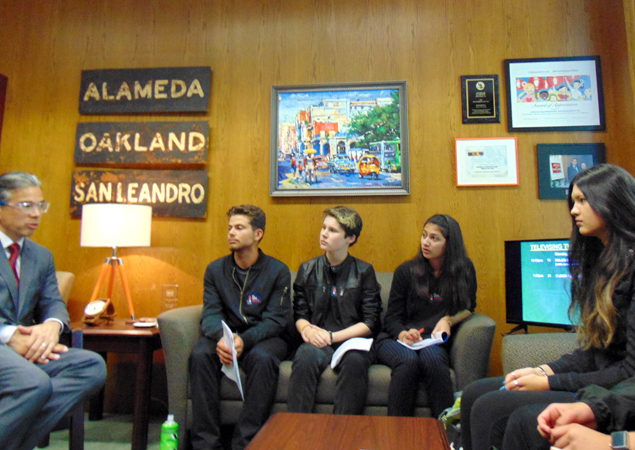
Back in Sacramento, that template was being launched into action — with its own BASTA spin. Once the students arrived, they broke into their subgroups and dashed into the Capitol building for their 1 p.m. meetings. Each meeting followed the same format: introductions, talking points on the bills and desired legislation, a personal story from a student, and then a question-and-answer session.
I tagged along with one group who met with Democratic Assembly member Rob Bonta, who has been relatively supportive of gun control reform.
“There is more we can do and we should do and we will do, but I just want to say that your entry into this debate is I think one of the most transformational, powerful things that have happened,” Bonta told the teens. “I have been here for San Bernardino and for Vegas and Florida, Santa Barbara. We always do a little more, but I was worried that the same thing would happen: that Democrats would introduce bills, Republicans would talk about the Second Amendment, then stuff wouldn’t happen.”
Even though California holds an “A” rating in Gabby Giffords’ gun law state scorecard, the state’s gun laws are not a paragon. Notably, the students want support for a bill to raise the age of buying a long gun to 21. They want access to public data on confiscated weapons. They want the state government to waive a fee that civilians have to pay in order to get a gun-violence restraining order. Most pressing, they want legislation passed to prohibit those convicted of domestic violence from ever being able to purchase a weapon in the state of California. They don’t want to take everyone’s guns away as some conservatives have claimed. They want to feel safe in their schools again, and for good reason.
Ivan Garcia, a 15-year-old who attended the rally, recalled a time when a classmate brought a gun to school.
“I was in public school up until last year, and in 6th grade there was an incident where a student brought a gun to school,” he said. “That just outraged me, and it’s sad because we’ve been fighting for gun control and gun reform and gun prevention in Oakland for such a long time. It’s sad that it took something like Parkland to be able to strike a national movement when it’s something we’ve been fighting for in our backyards.”
Active shooter drills — which are when students practice a protocol on what to do if there is a shooter in the school — have cultivated fear among many, too.
“I remember my first lockdown active shooter drill,” Cohen explained. “It was probably when I was about 12, 13 years old. I thought, ‘Oh, it is just like an earthquake drill,’ and then I realized that to be in that situation would actually be incredibly terrifying and the fact that it was something that we have to practice, we have to rehearse our own deaths, was a really horrifying reality.”
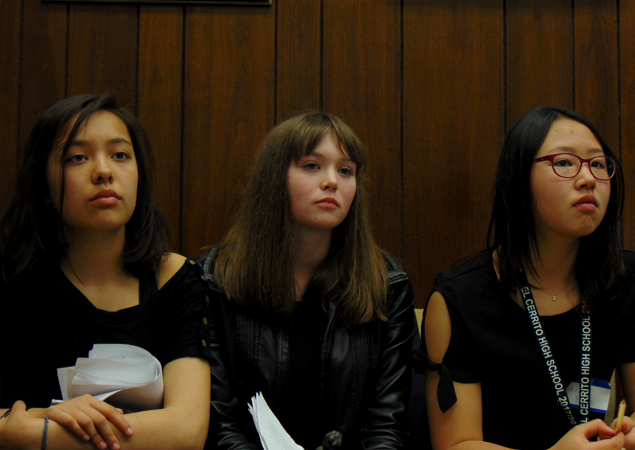
It’s hard to imagine what this movement would look like without social media. Would it have spread as quickly? Would it receive as much media coverage as it has — almost two months after the shooting — when there have been others since?
All of the teens I spoke with credit social media for bringing them together, for maintaining the movement’s momentum. Even Parkland survivor Emma Gonzalez told the New Yorker it’s part of their power: “We know how to keep people’s attention on us because we’re teenagers, and we have the phones,” she said.
Commendably, many of the youths spoke of an intent to extend their activism beyond gun control.
“Success for today in the eyes of everyone would definitely be to see some more gun reform in California and maybe even nationwide,” Garcia explained. “But I think for me personally a success is just really getting these young people involved and getting them to meet with our senators and assembly members — that in itself is so crucial to having a really strong democracy in our country.”
Nancy Feidelman, who has been a teacher for 24 years, said she’s never seen students take an interest in democracy like these teens today.
“I would say that I have seen only piecemeal efforts [previously] that have not been sustained because they’ve been eclipsed by homework,” she said.
* * *
There are a handful of predisposed universal truths that are expected of American teenagers, one being the romanticized rebellion. As exemplified in “Ferris Bueller’s Day Off” or “The Catcher in the Rye,” there is an implicit expectation that Americans will rebel at some point during their teenage years.
And perhaps this is where the rebellion lies for this generation. Today, American teens are showing adults they can be students and activists. They can study for a test and organize a rally to meet with policymakers.
“They say ‘teenagers are lazy,’ when really, we’re like it’s a 10 o’clock [at night] and we’re printing and stapling all these things, and we have school the next day,” Baden-Lasar said.
“About 10 people have probably worked every day for the last month, for at least three hours, many days up to like six, seven hours,” she added.
